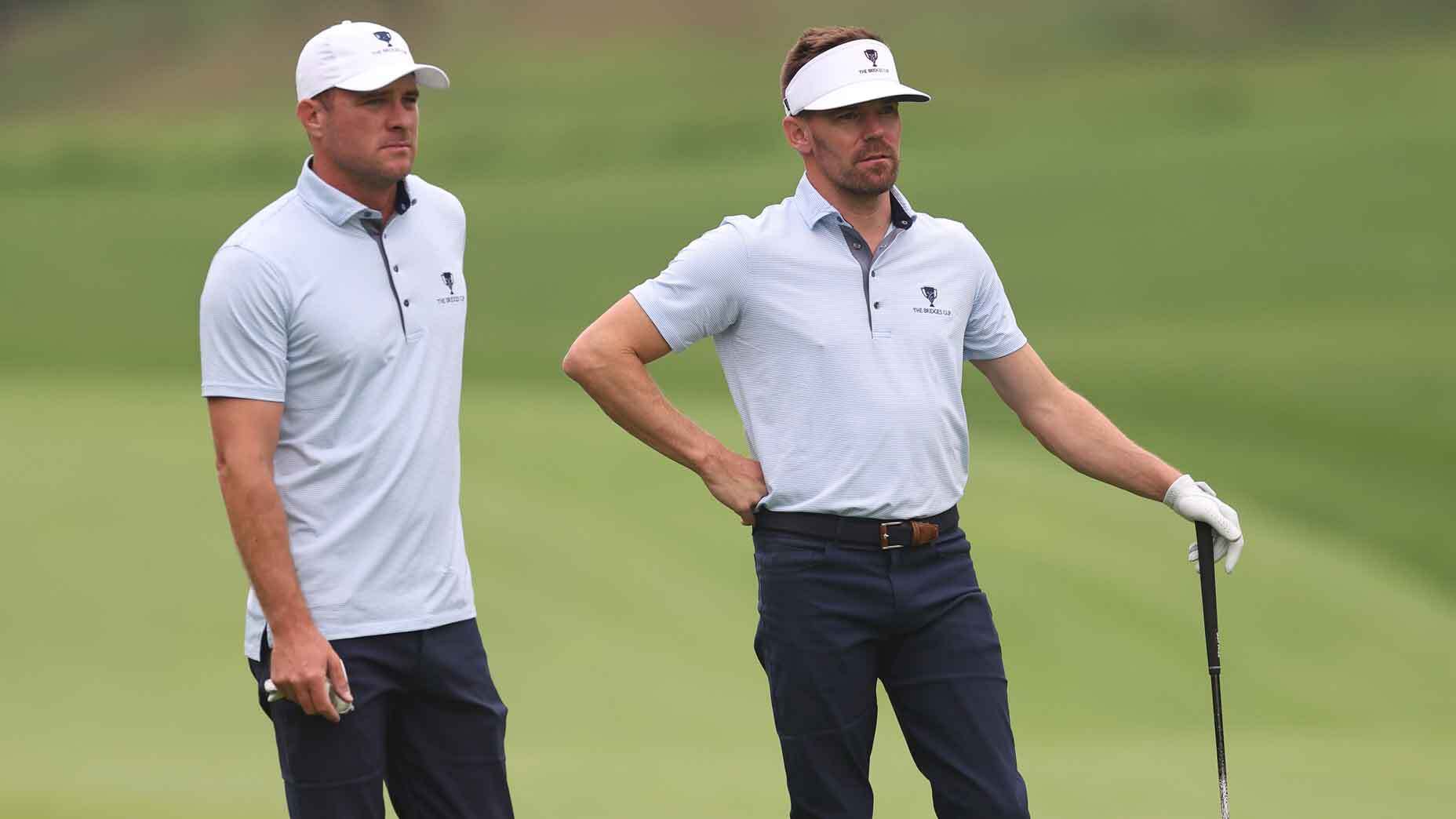Bridges Cup player profile: Lukas Michel is still digging it out of the dirt
- Share on Facebook
- Share on Twitter
- Share by Email

Former Mid-Am champion Lukas Michel has found a new calling in golf course architecture.
Courtesy
Where in the world is Lukas Michel?
When we get each other on the phone, he’s calling from tomorrow, actually, near the base of Mount Fuji in Japan. It’s early morning there but he’s up and at it because it’s Day 2 of the Asia-Pacific Amateur, one of the biggest amateur events in the world, with spots in the Masters and Open Championship on the line.
He shot 71 on Day 1 and was just slightly annoyed about it, having been under par early in the round. But that’s in the past, and the immediate future might be more annoying. Storms are ripping through the Shizuoka area, delaying the second round of the event. All of which means the golf game is put aside for now, and the laptop comes out.
Michel, who famously won the U.S. Mid-Am back in 2019, earning a bid into the fall Masters and 2020 U.S. Open at Winged Foot, spends a lot of time on his laptop these days, because his day job requires it. Michel is now a design associate at Clayton, Devries & Pont, an increasingly popular international golf course design firm, perusing CAD drawings of bunker shapes and green layouts. What started as an 8-week gig in 2020 has grown into a much bigger role every year since.
“[I’m] at least 75% designer now, whereas in 2019 it would have been 100% player,” Michel says.
That scale may lean in the design direction these days for Michel, now 30, and likely every day moving forward, perpetuating the truism that those who work in the golf industry play the sport less than those who don’t. But if there’s anything to be learned by his recent schedule, there’s still plenty of room for both in his life. Have Clubs, Will Travel is a great motto not only for elite amateurs, but also for enterprising course architects.
Before the Asia-Pacific Am — which he qualified for as one of the top seven players from Australia — Michel was in the New York area competing in The Farrell, a high-end amateur comp held at Stanwich Club in Connecticut. Before that came the Mid-Am at Kinloch Golf Club in Virginia, the biggest event on his annual calendar, for which he is qualified through 2029. Michel took a spin through the U.K. this summer, wearing mostly a designer hat, reacquainting himself with the game’s origins, and will soon flash his passport in Korea en route to the Bridges Cup, a 24-player team event for elite amateurs. (GOLF’s holding company, 8AM Golf, hosts the event annually.)
When that comes to a close Michel will head back to his home base in Melbourne, Australia, where summer is just beginning and a majority of his design projects are underway. He is a walking reminder that in this sport, it’s plausible to find sunny and 75 degrees every single month. You just have to find the gig that supports annual playing/scouting trips to America and Europe … and hold on tight. Which is why he staved off sleep on his first jet-lagged night in Japan to log a few hours of computer work.
“It’s funny because when I pull out a laptop and start working, it keeps me awake,” he says. “It’s not the sort of work that’s putting me to sleep. It’s actually getting my brain working and it’s keeping me engaged, and I really do enjoy it … A lot of people can’t say the same thing about the work they do, so I think I’m very lucky in that regard.”
The computer work is one thing, but when Michel tells the story about requesting an early tee time at the Sandbelt Invitational so he could drive three hours to make a site-visit, only to drive back that night and play the next round in the morning, you start to realize what sits atop his priority list: his future, as a high-minded, high performing amateur golfer more focused on making great golf courses for you, me and everyone else who dreams about playing the game like he can.
So I ask the natural question: how does one do it? How can you remain one of the best amateur golfers in the world and sprout the roots of a very busy, very international architecture career?
The answer: you get comfortable being uncomfortable.
“You know, I’ve played a lot more golf with that sensation and actually had some good performances despite it,” Michel says. “And then realized, ‘Wait a minute. Yes, I like to be super over-prepared for things, but you can still play well without that.’ Golf is such a mental thing. Once you can prove to yourself you can it with maybe being a little bit underprepared, I think it gives you more confidence going forward.”
Latest In News
Behind the scenes of NBC Sports' Kevin Kisner hire

Sean Zak
Golf.com Editor
Sean Zak is a writer at GOLF Magazine and just published his first book, which follows his travels in Scotland during the most pivotal summer in the game’s history.









